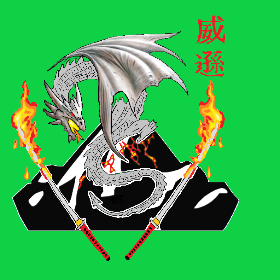Open Registrations
About Us
Haidong Gumdo
Haidong Gumdo is a sword based martial art that is rapidly growing in popularity here in the USA nationwide. Gumdo is also known as Kumdo, or Geomdo. Those words are a translation of the meaning of the word 'sword art' in Korean language. The meaning of Gumdo is the same as 'Kendo' in Japanese. 'Haidong' roughly translated was 'Land by the Eastern Sea', and was another name for Korea that had been used by other countries in ancient times. Thus, 'Haidong Gumdo' means 'Korean sword art.' Haidong Gumdo is different than traditional Kendo or Kumdo in that the focus is on battlefield engagements and the need to defend against multiple attackers rather than a focus on a single death blow.
According to the World Haidong Gumdo Federation, "The true principle of Haidong Gumdo is to execute justice with the sword light that is obtained at the break of day from majestic and brilliant sunlight that glows over the east sea"
"Haidong Gumdo" is a Korean sword art which strives to build a curriculum for mental, physical and spiritual development. Those words are a translation of the meaning of the word 'sword art' in Korean. The meaning of Gumdo is the same as 'Kendo' in Japanese. 'Haidong' roughly translated was 'Land by the Eastern Sea', and was another name for Korea that had been used by other countries in ancient times. Thus, 'Haidong Gumdo' means 'Korean sword art.'
Haidong Gumdo is different than traditional Kendo or Kumdo in that the focus is on battlefield engagements and the need to defend against multiple attackers rather than a focus on a single death blow. According to the World Haidong Gumdo Federation, "The true principle of Haidong Gumdo is to execute justice with the sword light that is obtained at the break of day from majestic and brilliant sunlight that glows over the east sea"
Haidong Gumdo has more than 2,000 years of history. Nonetheless, it was not well-known as it was handed down from person to person for centuries. However, some master's efforts to teach it to the public have changed this situation. Thanks to their contribution, Haidong Gumdo has now become a dominant art in Korea like Taekwondo. Today, it has more than 1,000 schools in Korea and over 300 schools overseas. The 4th World Championships were held in Korea in 2008 and attracted over 10,000 attendees.
Haidong Gumdo is a much softer style martial art compared to others such as Tae Kwon Do or Karate. It focuses on mental and physical conditioning but much more mental control is developed. Students learn forms, step drills, sitting and standing meditation, sparring as well as bamboo and straw cutting. Unlike Kendo and its Korean equivalent, Kumdo, the focus in Haidong Gumdo is not dueling but on the tactics of outdoor, pitched battles. It focuses on multiple attackers and uses a much broader range of techniques and attacks.Students of Haidong Gumdo will learn meditation and proper breathing exercises that will relieve stress and promote a healthy body and mind. Don't let it's grace fool you though. Although the many forms in Haidong Gumdo are elegant and beautiful, they all have an underlying background of strength and ferocity. Powerful, complex and beautiful, Haidong Gumdo is a wonderful martial arts style that can be pursued throughout a person's life. Whether you're 6 and your favorite cartoon character is a sword wielding super hero or 60 and you need something to ease stress in your life you'll find that Haidong Gumdo benefits you in many ways.
Ettiquette in the Dojang
Why all the bowing? Do I really have to do that? In Korea, a bow is an expression of trust, respect and a way to honor someone. The Dojang is not a gym or workout room, it is a place where a Martial Art is taught. It is where a person gains a new perspective about who they are, what they are capable of, and with that a responsibility not to abuse the special art entrusted to them.
The Dojang, it's instructors and your fellow students are to be respected . Respect starts when you enter the building. You bow to the Head Instructor or the head Table area (Where the National and/or Organization Flags or a picture of the Grand Master are displayed. After changing into your Dobok (outfit), you again bow as you enter the training area. When the class formally starts, everyone lines up according to their rank. There may be a series of bows to pay respect to the Instructors and Senior Students. Training will usually consist of warmups, drills, forms. Meditation may be used at any time to help the student focus, or calm the mind after strenuous drills. Some of the training will be done individually while others will require a partner. If assigned a partner, always begin and end with a bow to each other. There will be a formal closing of the class with bows. As you leave you again bow leaving the mat area and bow departing the building.
Beginners practice with the wooden training sword to develop fundamentals. Advanced practitioners with the proper respect and control train with both the wooden training sword and an unsharpened metal practice sword. At first Dan (black belt) the adult has finally earned the privilege of using a sharpened forged steel sword.


